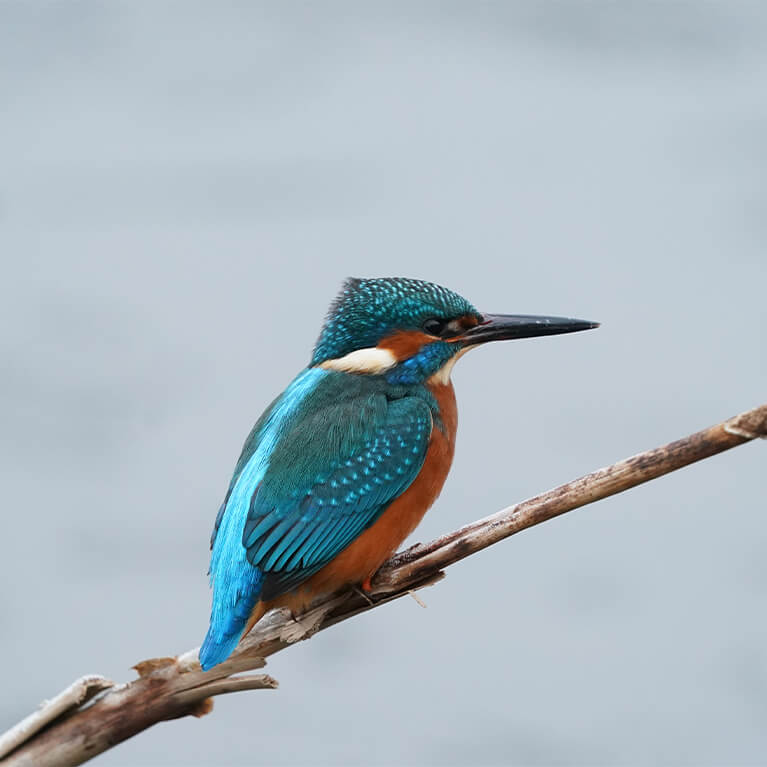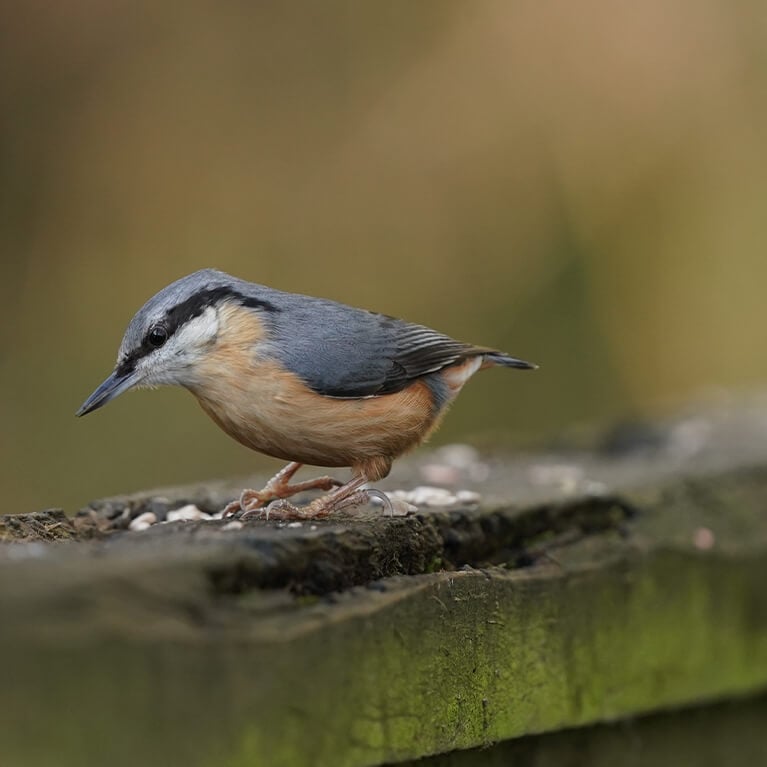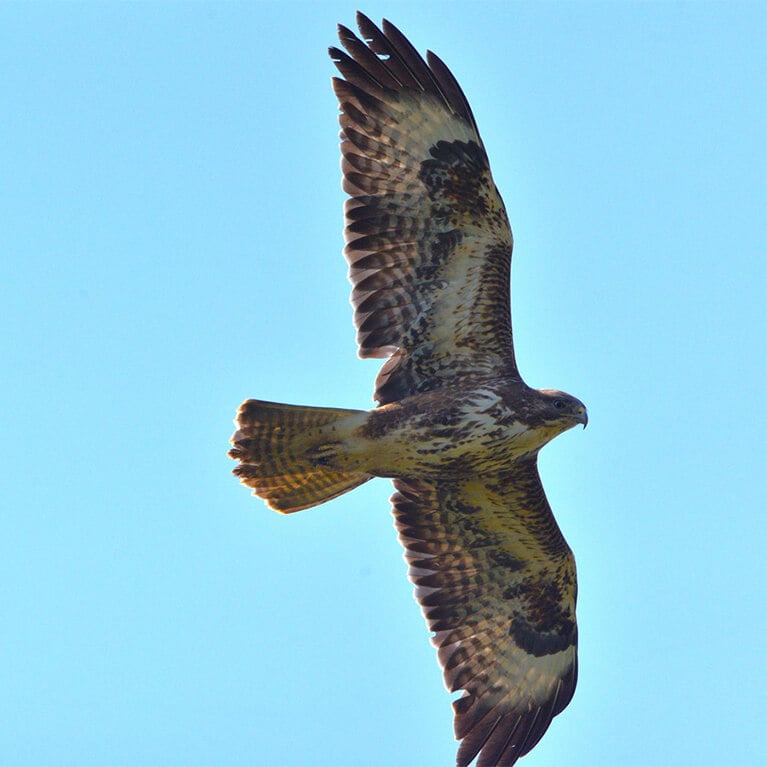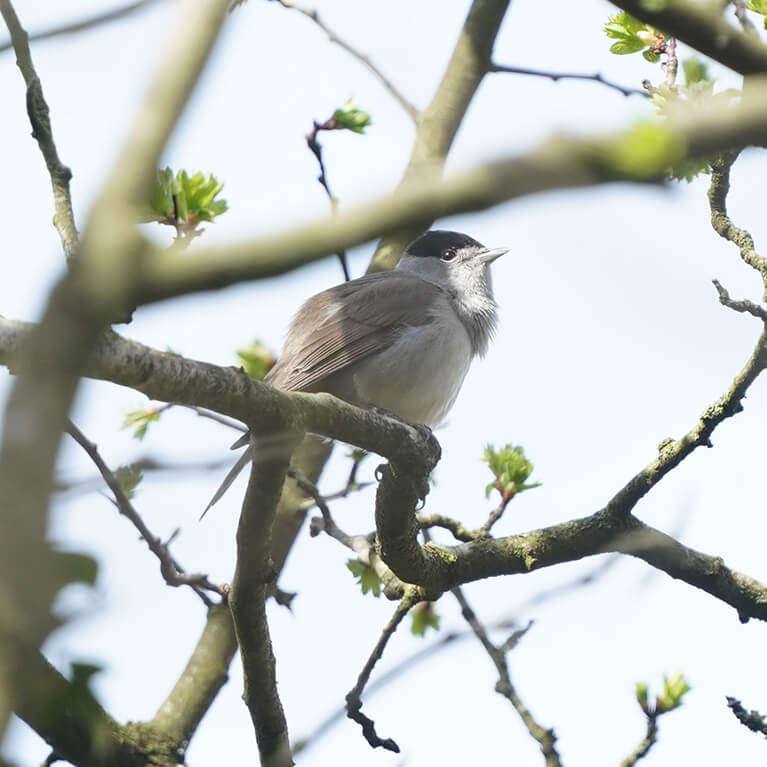Louth lies on the River Lud and its steep sided Beechwood cloaked glacial valley above the town and adjacent fields and parkland through which run the pristine chalk stream tributaries of the Lud are an attractive area for birds of the Wolds streams and woods.
- Gateway Site
what species and habitats can you find?
The specialities include kingfisher, grey wagtail, nuthatch and treecreeper. The Georgian market town itself is also of interest. St James’s Church spire, the second tallest in England, holds a regular pair of breeding peregrines, swifts are common in summer and grey wagtails can be seen from bridges over the river through the town.
Autumn & Winter species
Skeins of pink-footed goose flying over, tawny owls calling in the evenings, arriving fieldfares and redwings.
Kingfisher, grey wagtail, nuthatch, treecreeper, peregrine, buzzard (all present all year round) and siskin.
Spring & Summer species
Chiffchaff, blackcap, goldcrest, stock dove, swift, peregrine (young flying from early July).
useful hints and tips
Its easiest to park in a town centre car park and walk to Westgate Fields along Westgate, checking out the church spire for peregrine as you go past, and on your way back. At Westgate Fields walk along the river side and watch the river and small mill lake for teal, gadwall, kingfisher and grey wagtail. A little further on the alder trees around the river provide great winter feeding for tit and finch flocks and are worth scrutinising for siskin, redpoll, treecreeper and nuthatch though goldfinch and chaffinch are much commoner. At the far end of Westgate Fields turn right and walk along the river to Hubbards Hills. At the entrance there are toilets a car park and a delightful café which remains true to its Edwardian roots. The farmhouse adjacent has a front garden feeding station which is great for nuthatch and stock dove. The lake in Hubbards Hills is always worth a look for mainly mallard and moorhen but also mandarin occasionally and grey wagtail regularly. Walk to the far end of the hills along the river and choose to walk back up the stairs to the left along the top of the valley or explore the footpaths into the Wolds further around Hallington and Raithby. Return back the way you came and perhaps stop off at the Wheatsheaf Pub at the church end of Westgate where you can sit outside at the back with a well earned pint and watch for peregrines. Peak time is February to July but they are present all year round.
If you miss kingfisher above Louth walking out of town east along James Street and Ramsgate to Riverhead and along the canal up to 2 miles out of town as far the Sewage Treatment works should boost your chances especially in September to March. They are much easier to see out of the breeding season.
facilities
Louth has a full range of facilities, car parks, hotels, airbnbs, lots of great food shops and takeaways, good pubs and a market on Wednesday, Friday and Saturday. There are public toilets on Eastgate and at the entrance to Hubbard's Hills.
getting here
Louth, known as “The capital of the Wolds” lies at the foot of the east side of the Wolds at the junction of the A16, A157 and the A153. The town is most easily reached by car or bus from Lincoln and Grimsby, both of which are on the national rail network. There is a good 24 hour parking at Broadbank (LN11 0EQ) and if that is full, Northgate (LN11 0LY).
dog access
Please respect the signed roadside parking restrictions and stick to public rights of way. Westgate Fields and Hubbard's Hills are open access but the car park at Hubbards Hills (LN111 0QP) opens around 9am and closes at 4pm and the café is only open when the car park is from Easter through to end of August.
If you have a dog please keep it on a lead and respect the signs indicating the park rules.
opening times
There is 24 hour access to Hubbard's Hills and Westgate Fields but be prepared, there is no streetlighting and you will need a torch or a good moonlit night if you decide to venture out after dark.
nearby town
Louth
Visit Louth for weekly food markets. Sample some of Lincolnshire’s finest produce and enjoy the picturesque countryside of the Lincolnshire Wolds.
Birds of Louth
Not many towns in England have a book devoted to their birds. Louth is one of them.
Well known Louth birder John Clarkson tragically died recently. He was working with Phil Espin on a 2nd edition of his Birds of Louth (2007). Friends and family have worked on its completion. Soft back, 148 pages, lavishly illustrated with excellent colour photographs and written accounts of all 195 bird species recorded in Louth. Text by Louth born Phil Espin, who has written many of the birdwatching tips on this website. The book also has a full 407 species Lincolnshire Checklist. Birds of Louth has been very well received and makes an excellent gift.
Available online from www.lincsbirdclub.co.uk/sales £15 (inc p&p), all profits to brain tumour research.
places to stay nearby
Make a trip of it! Enjoy a coastal getaway with a selection of places to stay close by.
Longwool Lookout at the Rookery Rural Retreats
Louth Livestock Market Motorhome Stopover
Off-the-Grid Camping at Wykeham Hall Farm
Sycamore and Stars Off Grid Retreat
The Saddlehouse at Wykeham Hall Farm
The Stables at the Rookery Rural Retreats
Brackenborough Hall Coach House
Elmhirst Lakes Luxury Fishing Retreat
Greetham Retreat CL Touring Site
Grimblethorpe Hall Country Cottages
Katie’s Corner at Greetham Retreat
Laura’s Loft at Greetham Retreat
Maggie’s Mews at Greetham Retreat
Rose’s Rest at Greetham Retreat
The Half Moon Hotel and Restaurant
Wendy’s Wing at Greetham Retreat
Holme Lea Caravan & Camping Site (inc. Green Gables Luxury Wagon)
Otby House Farm Caravan and Camping Site
things to do in the area
Battle of Britain Memorial Flight Visitor Centre (BBMF)
Horncastle Pool & Fitness Suite
Laceby Manor Resort Restaurants
Laceby Manor Spa & Golf Resort
Lincolnshire Aviation Heritage Centre
Lincolnshire Llama Cleethorpes
Longwool Lookout at the Rookery Rural Retreats
Louth Livestock Market Motorhome Stopover
Medieval Maze and Victorian Splendour Cycle Route
Meridian Leisure Centre, Louth
Off-the-Grid Camping at Wykeham Hall Farm
Sycamore and Stars Off Grid Retreat
The Cheese Shed @ Cote Hill Farm
The Saddlehouse at Wykeham Hall Farm
The Stables at the Rookery Rural Retreats
Back 2 Bear Outdoor Activities
Bain Valley, Belmont Mast, Biscathorpe Lake Birdwatching
Brackenborough Hall Coach House
Covenham Reservoir Birdwatching
Donna Nook National Nature Reserve Birdwatching
Elmhirst Lakes Luxury Fishing Retreat
Greetham Retreat CL Touring Site
Grimblethorpe Hall Country Cottages
Katie’s Corner at Greetham Retreat
Laura’s Loft at Greetham Retreat
Lincoln & Witham Landscape Recovery
Maggie’s Mews at Greetham Retreat
Messingham Sand Quarry Birdwatching
Messingham Sand Quarry Nature Reserve
Red Hill & Stenigot Birdwatching
Rose’s Rest at Greetham Retreat
Saltfleetby Theddlethorpe Dunes
South Ormsby Estate Birdwatching
South Ormsby Estate’s Lincoln Red Beef
The Blacksmith’s Arms Rothwell
The Half Moon Hotel and Restaurant
Wendy’s Wing at Greetham Retreat
Willingham Forest & Linwood Warren Birdwatching
‘Tails’ of the Riverbank Cycle Route
Caistor Arts and Heritage Centre
Edge of the Lincolnshire Wolds – Market Rasen to Caistor Cycle Route
Edge of the Lincolnshire Wolds – Market Rasen to Wickenby Cycle Route
Holme Lea Caravan & Camping Site (inc. Green Gables Luxury Wagon)
In Search of the Lost Don Cycle Route
Iron and Agriculture Cycle Route
Lincolnshire Wolds Cycle Route
Mysteries of the Marshes Cycle Route
Otby House Farm Caravan and Camping Site
Poachers Hideaway Holiday Cottages
Sandhills and Windmills Cycle Route
The Ranch Steakhouse and Grill









